I've been hearing media reports about there being a shortage of Daffodils this year.
There's no shortage here.
We're awash with them - they're in the borders, under the hedges, in the lawn, under the tree...
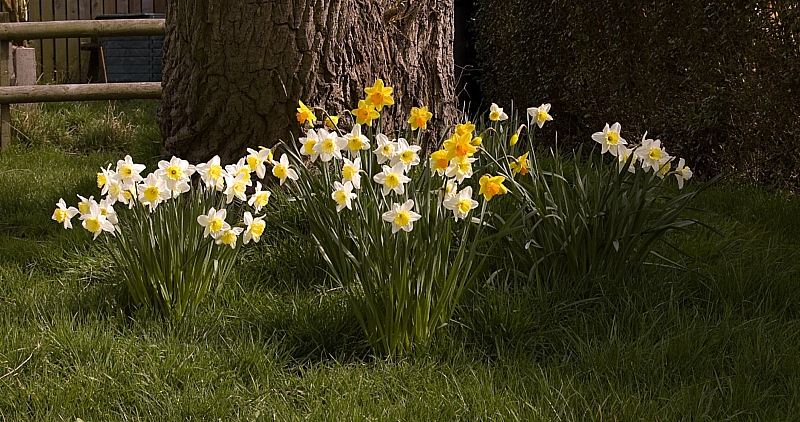
I've been hearing media reports about there being a shortage of Daffodils this year.
There's no shortage here.
We're awash with them - they're in the borders, under the hedges, in the lawn, under the tree...

Teachers of Physics teach physics...
teachers of Music teach music...
teachers of French teach French.
I've been trying to apply the same logic to the following ad, but it just doesn't seem right:

There's much oddness going on here - over the last five days I've had several hundreds of "Guests" looking at this blog's archive for September 2007, and I've no idea why. No other archives, pages or posts are being visited any more than usual. Any thoughts?
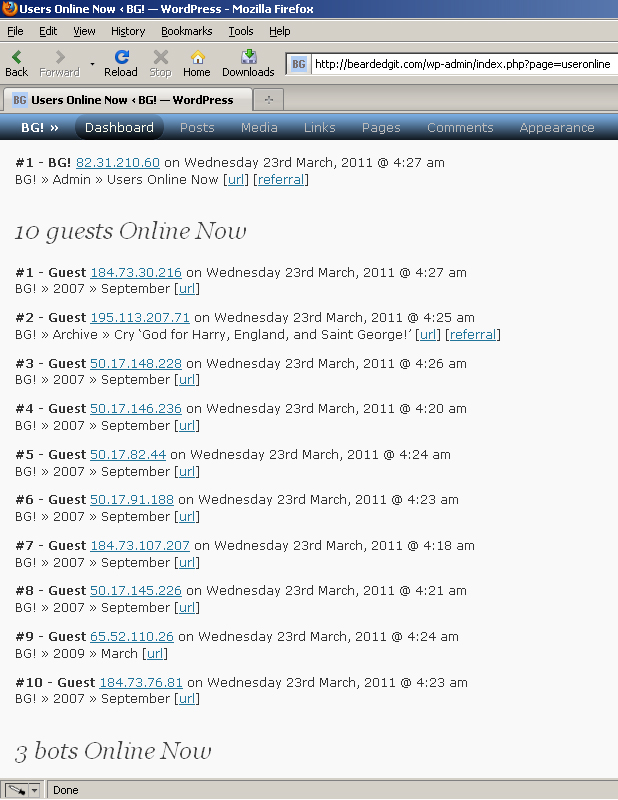
More or less the same as before - more practice with the 1000D. I really could do with getting a Barlow or a Powermate so as to get a better imaging scale for these smaller targets. Oh, and I did a bit of lunar imaging, you might want to click on the pic to see it at the original size 🙂

M102 (aka The Spindle Galaxy, NGC 5866), a lenticular galaxy in the constellation Draco.
Subs: 20 light @ 300s, darks and bias frames, ISO400.
1000D on the 6" R-C, guided with PHD.
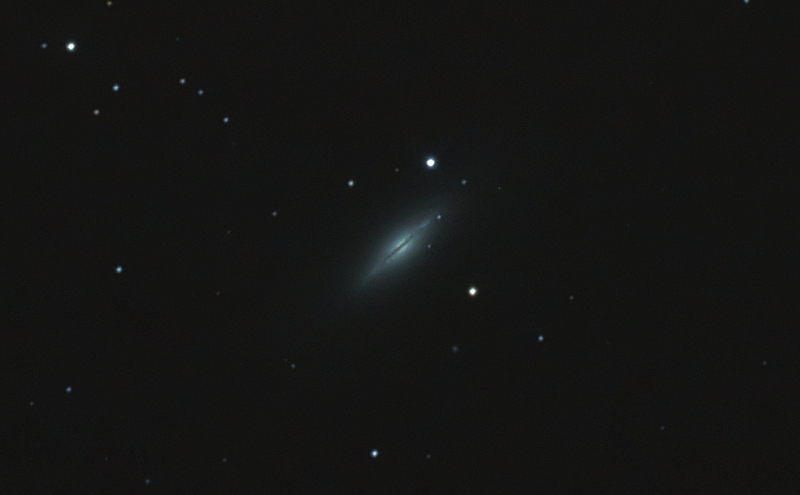
As previous, cropped, and enhanced.

M64 (aka The Black Eye Galaxy, NGC 4826), a spiral galaxy in the constellation Coma Berenices.
Subs: 20 light @ 300s, dark and bias frames, ISO400.
1000D on the 6" R-C, guided with PHD.

As previous, cropped, and enhanced.
The Moon.
24-pane mosaic created with iMerge.
Each pane 50/1000 frames stacked with K3CCDTools3.
DMK mono CCD camera on the 6" R-C, unguided.
Usual story... sub-zero, still and clear... out with the baby R-C scope looking at more Messier Objects. Different camera, though - I'd sold a few redundant items and used the proceeds to get a refurbished Canon 1000D body at a knock-down price. Time to give it a trial run.
Imaging-wise the process wasn't much different, with the exception of the need to take bias-frames to counter the read-out signal of the camera's CMOS sensor - this is something that I never had to do with the Nikon D50, as the CCD sensor in it has a very low read-out signal. Still, it's a small price to pay for not having to contend with long-exposure amp-glow - the Nikon had a bit of it, the Canon has none at all. Oh, and I was using different capture software - APT - which turned out to be excellent.
Anyway, I'll let the results do the talking:
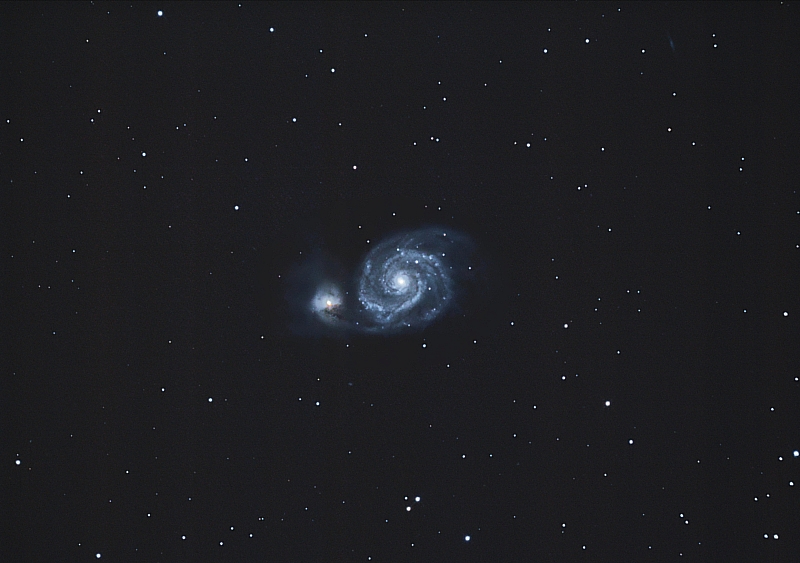
M51a (aka NGC 5194), an interacting spiral galaxy in the constellation Canes Venatici.
M51b (aka NGC 5195) is the smaller companion galaxy.
Subs: 20 light @ 300s, darks and bias frames, ISO400.
1000D on the 6" R-C, guided with PHD.
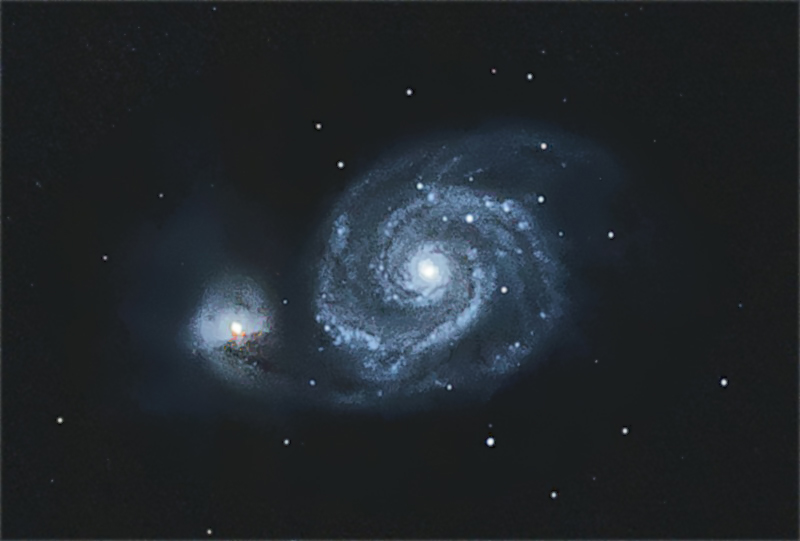
As previous, cropped, enhanced and over-cooked.
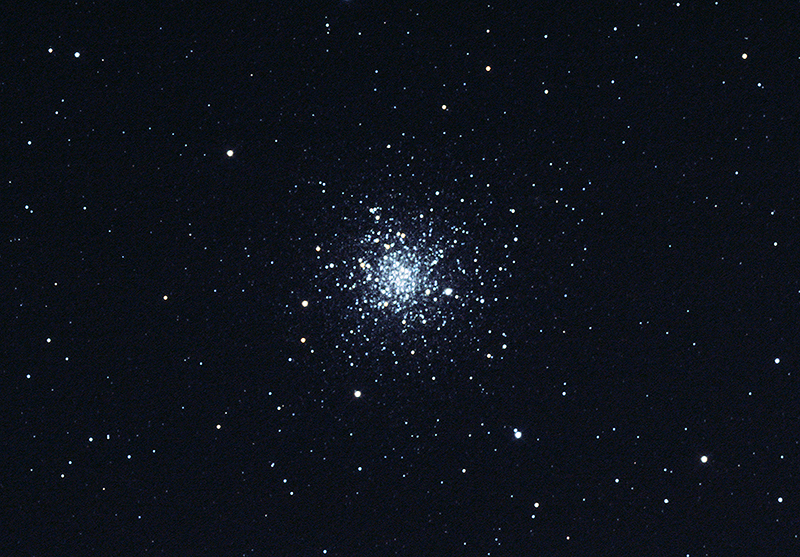
M12 (aka NGC 6218), a globular cluster in the constellation Ophiuchus.
Subs: 9 light @ 300s, dark and bias frames, ISO400.
1000D on the 6" R-C, guided with PHD.
The Leo Triplet - M65 (NGC 3623, upper-right), M66 (NGC 3627, lower-right) and NGC 3628 (lower-left) - a group of galaxies in the constellation Leo (as if you hadn't worked that out already).
Subs: 15 light @ 300s, dark and bias frames, ISO400.
1000D on the 6" R-C, guided with PHD.
Methinks I'll get to like this Canon a bit sooner than I thought.